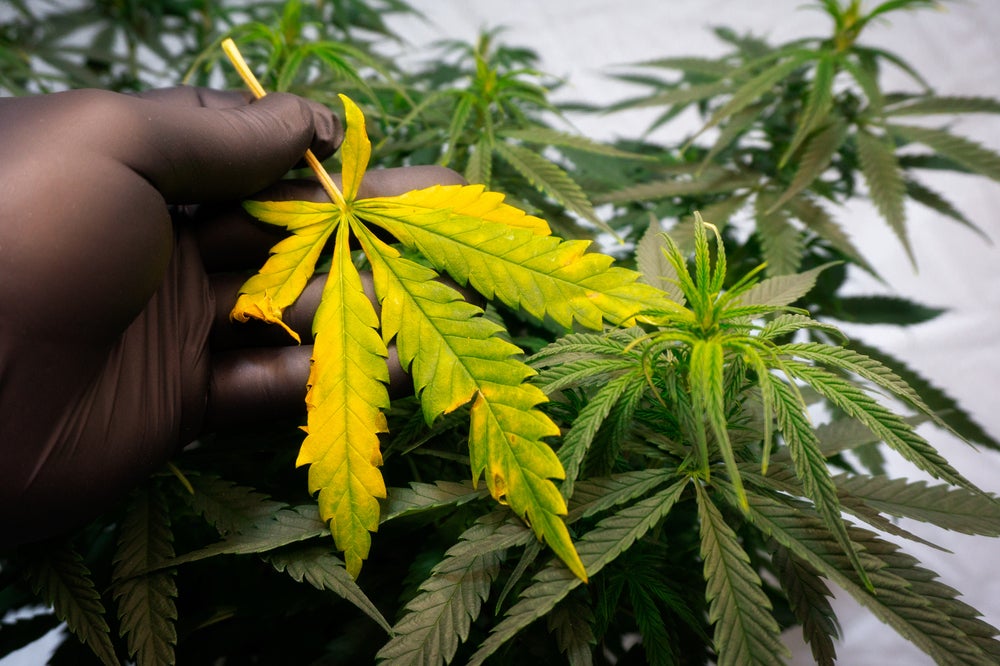Troubleshooting Cannabis Clone Diseases Like Damping Off
Cloning cannabis provides growers with many benefits, but it can also introduce risks of spreading diseases. Common cloning problems like damping off and other stem or root diseases require vigilance to both prevent and mitigate. By quickly identifying and addressing issues, growers can troubleshoot clone problems and get gardens back on track.
What Causes Diseases in Clones?
- Unhealthy mother plants – Weak, stressed, or infected mothers pass on problems to cuttings. Always select vigorous donors free of pests/disease.
- Dirty cuttings tools – Pruners, scalpels, and scissors can spread bacteria and fungi between plants if not disinfected. Use alcohol between each cut.
- Unsterilized media – Reused rooting media or contaminated components like old soil can harbor pathogens. Only use fresh, sterile mix.
- Overly wet media – Excess moisture enables damping off fungi and root rot to thrive. Allow media to dry back between waterings.
- Poor air circulation – Stagnant, humid air promotes mold spores and bacterial growth on leaves and stems. Ensure adequate airflow.
- Insufficient light – Weak lighting hampers growth, leaving clones stressed and vulnerable. Provide adequate intensity for stage of growth.
- Neglect – Ignoring warning signs allows diseases to become fatal. Monitor closely and treat at first symptoms.
By knowing what conditions promote disease and addressing them proactively, growers can often prevent cloning issues from developing in the first place.
How to Identify Damping Off
Damping off typically appears 5-10 days after cutting while roots are initiating. Symptoms include:
- Rapid wilting and collapse of tender young stems at soil line or just below leaf nodes
- Watersoaked lesions or sunken cankers on stems
- Stems pinched and shriveled at base causing toppling over
- Dark fungal mycelium visible on infected tissues
- Entire cutting rots and dies quickly once infected
Catch damping off early by staying vigilant for the first signs of stem issues. Don’t write off a cutting as “not rooting” early on. Inspect closely for disease evidence.
Troubleshooting & Preventing Damping Off
If damping off strikes, isolate affected clones immediately to prevent spread. Remove and destroy any infected plant material and sanitize tools after. Improve conditions with the following tactics:
- Allow media to dry out more between waterings
- Increase air circulation and ventilation around cuttings
- Use hydrogen peroxide to sterilize reused media
- Bottom-water to avoid splashing water on stems
- Add silica supplement to strengthen plant tissues against infection
- Spray plant stems with cinnamon solution to fight fungus
- Apply beneficial microbes to outcompete pathogens
- Lower humidity gradually once roots form
While labor intensive, damping off is manageable if addressed promptly and properly. Prevention is more effective though. Avoid excessive moisture in the root zone, allow no stagnant air pockets, provide adequate light, and employ the very best sanitation practices from start to finish. Remain attentive and be prepared to take action at the first indication of disease. With a little effort and care, clones can thrive free of damping off and other deadly pathogens.
For a comprehensive understanding of Cannabis, we recommend reading our posts on Easy Cannabis Strains for New Growers, How Can Cannabis Clones Save Me Money and Time, and Cannabis Facts and Effects.













